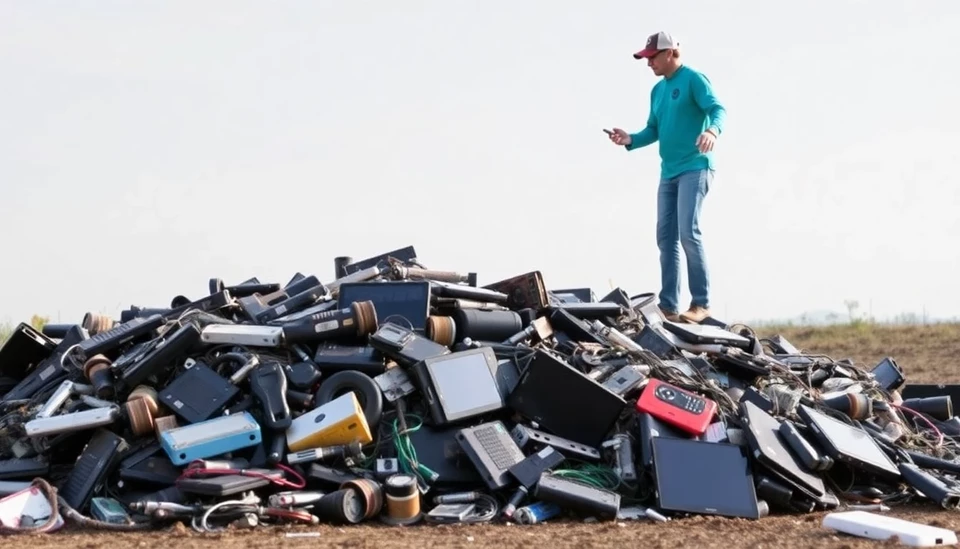
As technology continues to advance at a breakneck pace, the world's dependency on electronic devices has dramatically increased. However, this surge in tech consumption has led to an alarming rise in electronic waste, commonly referred to as e-waste, which is now filling up landfills at an unprecedented rate. According to recent reports, the detrimental impact of e-waste on the environment and human health has become a pressing global concern that needs immediate attention.
In 2022 alone, the world generated a staggering 57.4 million metric tons of e-waste, which is equivalent to nearly 7.3 kilograms per person on the planet. Sadly, less than 20% of this waste is recycled effectively, leaving a massive amount to languish in landfills, where hazardous materials can leach into the environment. If the trend continues, e-waste could skyrocket to 74 million metric tons by 2030, making it an urgent issue for policy-makers and citizens alike.
The majority of discarded electronics often contain toxic substances such as lead, mercury, and cadmium, which can have detrimental effects on both the environment and public health. These materials can seep into the soil and waterways, leading to long-term exposure risks for communities, particularly those near landfills. The situation begs the question: how can we mitigate the growing e-waste crisis?
One of the most effective strategies advocates suggest is enhancing recycling efforts. Countries around the world must prioritize the development of proper recycling facilities equipped to handle electronic waste. Improved recycling infrastructure could not only ensure that valuable materials such as gold, copper, and silver are extracted and reused but also minimize the negative environmental impact associated with the improper disposal of e-waste.
Additionally, education plays a crucial role in combating e-waste. Consumers should be enlightened on responsible disposal methods and the importance of recycling electronics. Awareness campaigns that encourage proper e-waste recycling initiatives can enhance participation rates and ensure that more electronic devices are disposed of responsibly.
Moreover, manufacturers are being urged to take greater responsibility for their products post-consumption. This has led to discussions around extended producer responsibility (EPR) policies, which hold manufacturers accountable for the entire lifecycle of their products, including disposal. By designing products that are easier to recycle and facilitating take-back programs, companies can significantly reduce the amount of e-waste entering landfills.
Another facet of the solution involves the promotion of sustainability and circular economy models. Encouraging consumers to repair, upgrade, and reuse their devices can significantly extend the lifespan of electronics, thereby reducing the volume of e-waste generated. Furthermore, incentives for repairing electronics instead of replacing them could also change consumer behavior and attitudes towards tech consumption.
As we look towards the future, it is clear that tackling the e-waste crisis will require a collaborative approach involving governments, businesses, and consumers. By adopting innovative strategies and policies aimed at reducing e-waste, we can mitigate its harmful effects on our planet and achieve a more sustainable future.
Ultimately, our collective action is essential if we are to curb this growing crisis. Now is the time for individuals and organizations alike to commit to responsible consumption and disposal practices to ensure a healthier planet for generations to come.
#EWaste #Sustainability #Recycling #CircularEconomy #TechWaste #EnvironmentalProtection
Author: Sophie Bennett
